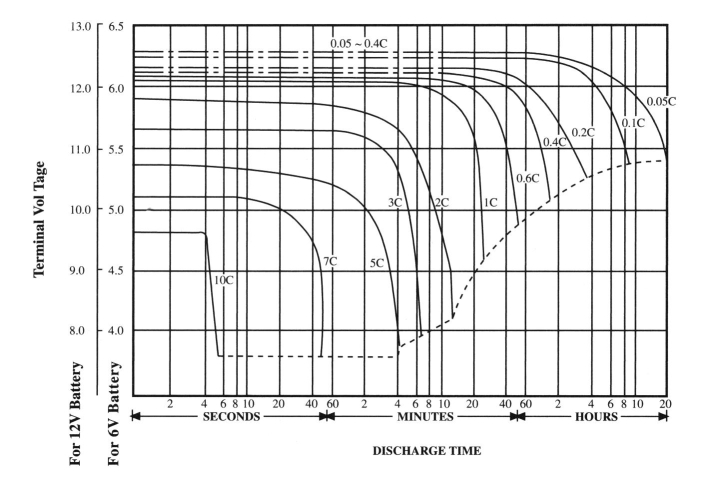Hi folks,
So as a follow up to my other thread about my admittedly poorly-matched van solar system, I've got a question I felt would be relevant to a wider scope.
Owing to other design factors, I draw (un-ideal) currents around the 150A mark, often for up to 30mins at a time. Obviously with this sort of amperage, Peukerts Law becomes a big issue - hence why you dont use 12V systems for 2000W +, if you have a choice (I didn't). This got me thinking about something which admittedly most folk with better-matched voltages probably don't have to consider.
Hypothetically speaking, lets sa you have a battery rated for 100Ah @ 10A, but owing to Peukert, only rated to provide 50 Ah @ 50A. This would mean, then, drawing 50A for half an hour would put you in the 50% SoC zone you ideally shouldn't cross.
But you've only pulled .5 h x 50A = 25Ah out of a "100Ah" battery - or at least, 100Ah if you're only drawing 10A. SO - does this mean that after pulling your 25Ah out at 50A, can you then pull ANOTHER 25 Ah out (so long as you do it at 10A) before reaching 50% SoC
OR
Should you prioritize the stated capacity for the highest load used in the discharge cycle (in this case, 50Ah @ 50A), thus making 25Ah equivalent to 50% SoC?
Discuss? What is considered 'best practice'?
Thanks all!
So as a follow up to my other thread about my admittedly poorly-matched van solar system, I've got a question I felt would be relevant to a wider scope.
Owing to other design factors, I draw (un-ideal) currents around the 150A mark, often for up to 30mins at a time. Obviously with this sort of amperage, Peukerts Law becomes a big issue - hence why you dont use 12V systems for 2000W +, if you have a choice (I didn't). This got me thinking about something which admittedly most folk with better-matched voltages probably don't have to consider.
Hypothetically speaking, lets sa you have a battery rated for 100Ah @ 10A, but owing to Peukert, only rated to provide 50 Ah @ 50A. This would mean, then, drawing 50A for half an hour would put you in the 50% SoC zone you ideally shouldn't cross.
But you've only pulled .5 h x 50A = 25Ah out of a "100Ah" battery - or at least, 100Ah if you're only drawing 10A. SO - does this mean that after pulling your 25Ah out at 50A, can you then pull ANOTHER 25 Ah out (so long as you do it at 10A) before reaching 50% SoC
OR
Should you prioritize the stated capacity for the highest load used in the discharge cycle (in this case, 50Ah @ 50A), thus making 25Ah equivalent to 50% SoC?
Discuss? What is considered 'best practice'?
Thanks all!

Comment